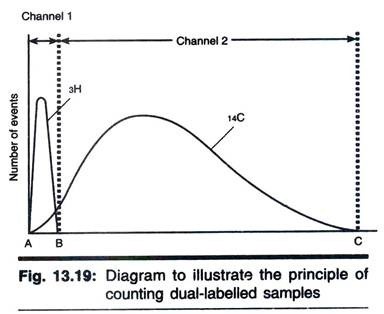In this article we will discus about the factors controlling calcification of bones in humans. Also learn about the proportion of inorganic compounds in bone.
i. Protein constituent of the cartilage has got affinity towards Ca++ and adsorbs calcium readily. However this favours the deposition of calcium as tricalcium phosphate.
ii. Reduction of protein concentration in the blood and also reduction of CO2 tension in blood favour the deposition of calcium salts. The metabolisms of cartilaginous cells are very low and likewise CO2 tension of the fluid in which the cartilage cells are bathed is lower than that of plasma. And thus this low CO2 tension will favour the deposition of calcium.
iii. Low calcium and inorganic phosphate concentrations in plasma retard calcium deposition.
iv. According to Watt, the calcifications is not a simple deposition of calcium salt but an active secretion by the osteoblast.
v. Robison and his colleagues have claimed that calcification is primarily dependent upon enzyme actions. This enzyme is to be phosphatase which raises PO≡4 concentration in fluid where the cartilage is bathed and favours the process of calcification of the cartilaginous matrix. Robison is not of opinion that the phosphatase mechanism is the only one mechanism that participates in calcification process because calcification is still possible in absence of phosphatase if calcium and inorganic phosphate remain in high concentration.
Besides the above factors, following factors have got some role in the development and growth of bone:
1. Vitamins:
Vitamin D is necessary for the calcification process. In absence of vitamin D there is decreased absorption of calcium from the food and also diminished the level of phosphate in blood. Cartilage cells of the matrix and the osteoid matrix are not calcified and causing rickets in children and osteomalacia in adults.
In vitamin D deficiency, formation of cartilage is continued but in irregular fashion and calcification may stop entirely. In vitamin C deficiency, osteocollagenous fibres are destroyed and the production of organic matrix in the bone is diminished. In vitamin A deficiency there is retarded skeletal growth with interference of the process of remodeling of bone.
2. Hormones:
Anterior pituitary hormone—Growth hormone has got direct effect on the bone growth. Excess hormone secretion during childhood causes gigantism and during adult stage, acromegaly. In deficient secretion of this hormone in childhood produces dwarfism. Gonadal sex hormones have got some role in the process of fusion of the epiphyseal bone. Parathyroid hormones have got direct relation with bone growth through the maintenance of calcium and phosphate balance.
Increased secretion of parathormone releases calcium and phosphate from the bone and this excess hormone level in the blood stimulates the formation of osteoclasts which are responsible for osteitis fibrosa of the bone. The resorptive action of parathormone on bone is opposed by the thyrocalcitonin secreted from the thyroid gland.
Defective ossification causes the typical deformities in bone such as knock knees, bowing of legs, spinal curvature and also malformations of the chest and pelvis. Osteoporosis is a malformation of bone matrix due to negative protein balance and is generally found in postmenopausal women and elderly people due to diminution of sex hormone. Excessive secretion of adrenal cortical hormone also causes this disease due to excessive protein catabolism.
Inorganic Compounds in Bone:
45% (of this calcium (Ca), phosphorus (P) and magnesium (Mg) are chief elements; potassium (K), sodium (Na) and chlorine (Cl)—in small amounts; iron (Fe), fluorine (F), lithium (Li) and strontium (Sr) —in traces. Ca remains mainly as phosphates and carbonates and slightly as chlorides and fluorides. Mg is found mainly as phosphate. Calcium-Phosphate ratio of mammalian bones is approximately 2.2 : 1.0. The ratio of residual calcium (other than presents as carbonate) to residual phosphate (other than magnesium phosphate) is about 2.0: 1.0.
The proportion of inorganic compounds of bone is listed in Table 1.2:
Thus, nearly half the weight of bone is made up of calcium salts.
The actual chemical substance of bone is not yet known.
